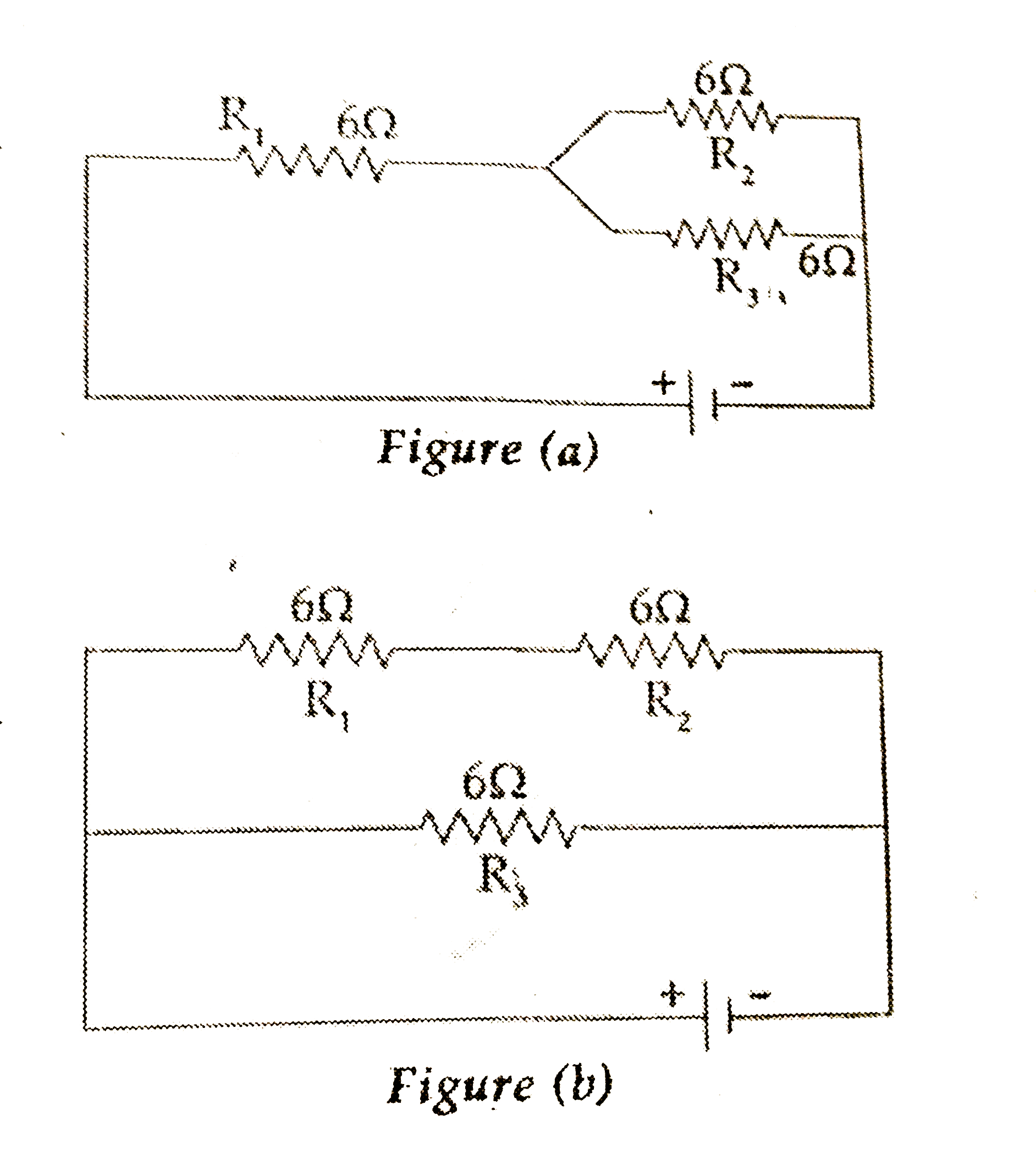Show how you would connect three resistors, each of 6Ω, so that the combination has a resistance of (a) 9 Ω, (b) 4 Ω.

Given R1=R2=R3=6Ω
(a) When R1 is connected in series with the parallel combination of R2andR3 [Fig(a)].
The equivalent resistance is :
R=R1+R2R3R2+R3
=6+6×66+6=6+3=9Ω
(b) When a series combination of R1andR2 is connected in parallel with R3 [Fig (b)].
The equivalent resistance is:
R=12×612+6=7218=4Ω
Topper's Solved these Questions
Similar Questions
Show how you would connect three resistors, each of resistance 6Ω so that the combination has a resistance of (i) 9Ω(ii)4Ω
View SolutionShow how you would connect three resistors, each of resistance 6Ω, so that the combination has a resistance of
(i) 9Ω
(ii) 2Ω.View SolutionShow how you would connect three resistors, each of resistance 6Ω, so that the combination has a resistance of (1) 9Ω (ii) 4Ω.
View SolutionShow how you would connect thre resistors, each of resistance 6Ω, so that the combination has a resistance of
(i) 9Ω
(ii) 2Ω.View SolutionShow how you would connect three resistors, each of resistance 6 ω , so that the combination has a resistance of
4 ωView SolutionShow with the help of diagrams, how you would connet three resistors each of resistance 6Ω, so that the combination has resistance of (i) 9Ω (ii) 4Ω.
View SolutionHow will you connect three resistors of 2Ω,3Ω and 6Ω to obtain a total resistance of : (a) 4Ω, and (b) 1Ω?
View SolutionShow how would you join three resistors, each of resistance 9Ω so that the equivalent resistance of the combination is (i) 13.5Ω , (ii) 6Ω ?
View SolutionShow how would you join three resistors, each of resistance 9Ω so that the equivalent resistance of the combination is (i) 13.5Ω(ii)6Ω?
View SolutionHow will you join three resistances, each of 2Ω so that the effective resistance is 3Ω ?
View Solution

